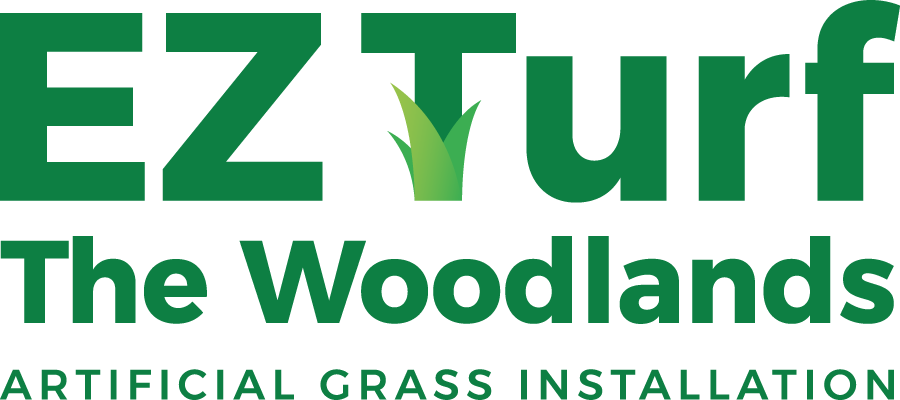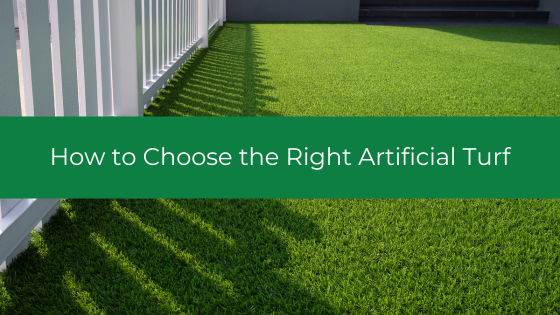Anyone considering making the switch from natural to synthetic grass can benefit by knowing how to choose the right artificial turf. There isn’t a single best turf for every setting, which means you’ll need to know the following:
- Where will the artificial turf be installed?
- How much foot traffic will the synthetic grass regularly see?
- What will the turf be used for?
- What kind of weather will the artificial grass be subjected to?
The answers to these questions will help guide your search in finding the artificial turf that will provide the best mix of durability, utility, comfort and cost.
Important Artificial Turf Terminology to Help Assess Your Options
Before you can compare and choose the right artificial grass for your property, it will help to know the common terminology used. Fortunately, there are only a few terms to understand to make your search easier, including:
- Pile height – Pile height is synonymous with grass blade length. It influences how the turf looks and feels. The longer the blades, the softer it feels. The shorter the blades, the easier they are to maintain. That is why most sports turf is kept short. Pile height is expressed in inches.
- Face weight – Face weight refers to the weight of the artificial grass, using ounces per square yard as the measurement method. Essentially, the face weight describes how much material is woven and built into the turf. As you might expect, the more material incorporated into the turf, the better its quality and the heavier its weight.
- Turf backing – Every artificial grass product is made with backing, which is the material the grass blades are attached to. Turf backing also facilitates drainage, though some are better at this than others. When comparing backing options, you’ll run into terms like “hole-punch” or “flow-through,” which refer to the backing’s permeability – an important drainage consideration.
- Infill – Though infill isn’t part of the turf itself, it plays an important role in any artificial grass installation. There are a variety of infills available, each with their own characteristics and applications. Examples include rubber, sand and organic infill mixes.
Now that you’ve got a quick glossary to work with, it’s time to use it to choose the right artificial turf for your project.
Matching Your Application to the Right Artificial Turf
Pile height, face weight, backing and infill are all important considerations when selecting artificial turf. Here is how to factor them in when reviewing various turf products:
- Backyards – What is your backyard used for? Is it mostly for show and slow-paced relaxation? A longer pile height and heavier face weight will give your yard a lush, rich appearance and texture. If aesthetics is a concern, you will also want a turf product that has thatch woven in. Artificial thatch looks just like the real thing, with yellow and brown tones that blend in well with the artificial turf’s green colors.
If your backyard is a high activity zone with children, pets and gatherings, choose a shorter pile height and heavier face weight to maximize durability while minimizing maintenance. An infill that promotes better cooling or turfs that have cooling features are also a good option. - Dog parks and runs – Shorter pile heights are a better option to keep maintenance down in dog parks and dog runs. Appearance often isn’t as important with dog-focused areas, but drainage is. For this reason, property owners typically choose turfs with flowthrough backings, though hole-punched turfs may be sufficient for lightly used dog runs.
- Playgrounds – Playground turf must be able to absorb impact to prevent injury. The right artificial grass to choose in this setting is one that has a padded, shock-absorbing backing. This is a separate layer placed under the grass and is offered through reputable artificial grass installers. In addition to a shock-absorbing underlayment, opt for a shorter pile height to keep maintenance to a minimum.
- Apartments and high-rises – Artificial grass is a popular option for small, landscaped areas or dog runs, as it can be installed in any space, no matter the size or shape. Some high-rises, for example, use turf to create rooftop or balcony green spaces.
A taller pile height and heavier face weight are recommended, as this will make for a more natural-looking installation that’s easy to promote as a community amenity. - Pool areas – Installing turf around a pool will require efficient drainage, so choose an artificial grass that has flow-through backing. A short pile height and heavy face weight will also ensure the turf withstands active traffic around the pool’s perimeter.
The Easiest Way to Choose the Right Artificial Turf is to Work With a Reputable Turf Installer
This guide is a good primer on how to choose the right artificial grass for your project. However, there’s much more to learn about turf and some of its advanced features – like UV-resistant pigments or rapid cooling.
To help make sense of everything turf has to offer, property owners can turn to professional artificial turf installers in The Woodlands. A reputable artificial grass company will have a deeper inventory of high-quality grasses to choose from. They can offer valuable insight into which artificial grasses would work best for your application. They can also provide expert installation services that include site preparation and flawless turf placement.
Many property owners find that the professional advantage is worth it, especially when trying to choose the right artificial grass.
- What Are The Benefits of Gym Turf for Workouts? - December 10, 2025
- How Do I Choose a Commercial Artificial Grass Installer? - November 11, 2025
- Choosing The Right Turf For My Playground Area - October 23, 2025

